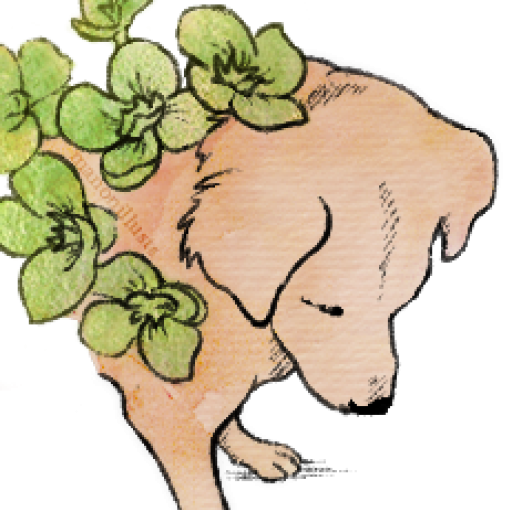
Common names: Oregano: Wild Marjoram, Marjoram: Sweet Marjoram, Pot Marjoram, Niu Zhi
Taxonomic name: Origanum vulgare, Origanum majorana
Family: Lamiaceae
Related herbs: Mints, Basil, Thyme, Sage, Rosemary
Area of origin: Mediterranean
Parts used: leaves and flowers, oil
Can be used for: Upset stomachs, colic, loss of appetite, fungal infections, colds and flu
Actions: carminative, diaphoretic, digestive, disinfectant, diuretic, emmenagogue, sedative, tonic, rubefacient, vermifuge, cleanser, anti-microbial, antiseptic
Organs/Systems: Digestive, Nervous, Respiratory, Skin
Meridians: Spleen, Heart, Urinary Bladder, Kidney, Liver
Taste: pungent, warm, spicy
Tissue states: cold, depressed
Energetics: warming, stimulating. Clears heat and damp
Healing constituents: volatile oil, thymol, carvacrol, dipentene, tannins, resins, sterol, flavonoids, linalool, hydroquinone, sabinene, vitamins A, B6, B9, C, K
Warnings: None
Description
Origanum majorana, is an sprawling perennial member of the Lamiaceae family. Plants can grow to be one to two feet in height and can spread an equally wide. It has fragrant, gray-green in color, ovate leaves that are hairy and opposite on a hairy stem. Tiny, tubular flowers that are white or pale pink bloom in clusters. Origanum vulgare looks very similar and I tell it apart from O. majorana by its pink flowers.

Medicinal uses
This is a good opportunity to show how closely related herbs have been found to have subtle differences in use as remedies.
Oregano (Origanum vulgare) and Marjoram (Origanum majorana) are two, very closely related plants, coming from the same Genus. They’re so close that many people don’t worry about the difference. Personally, I find Oregano a bit more pungent than Marjoram, but there are many who differ on that point.
Both are used herbally for states of sluggishness or inactivity in tissues. Herbalists call that a state of ‘depression’. Their warming and drying properties help tone tissues and restore function. This is where they subtly differ, as the sweeter taste of Marjoram makes it a slightly better tonic and restorative than Oregano.
They are great for respiratory infections such as cold and flus. This is another area of subtle difference, Marjoram is helpful for conditions with wheezing, mucus and irritable cough, whereas Oregano is better for colds marked by chills and shivering.


Both can help settle upset stomachs, I think because the oils in the plants work on contact with stomach linings. They are therefore pretty good dyspepsia, gastritis and hiccups and Marjoram has been found to help with the downward movement of materials through the digestive tract. Increasing circulation in internal organs and helping the liver clean toxins. Both herbs help promote the production of bile, helping with fat digestion and constipation (bile is a key lubricant in the lower digestive tract. Carvacrol is a potent inhibitor of bacterial growth and has been as a food additive to prevent food poisoning.
Both contain potent oils that are used for their antiseptic and antifungal properties. The antiseptic property is why they are also great for bad breath and gum conditions and contributes to the oil’s recent push by Youtube herbalists. People suffering from Athlete’s foot and Candida can benefit from the fresh leaves. Their warming nature can help with rheumatism and strains via a foot bath or douche. Oregano seems slightly superior in these situations, with it having the characteristic of stimulating local blood flow on application (that’s called a ‘rubefacient’).
The biggest difference is that Marjoram is said to have positive effects on some (slightly humorous) mental states. The one that springs to mind, being an old romantic myself is that it helps with people who are too obsessive with romance, cases of unrequited love where the thinking becomes obsessive. Marjoram is, in fact, quite specific for cases of romantic infatuation that are ‘relieved by jogging‘!
Marjoram is also indicated for mental tiredness, for high strung people who can’t relax and cases of headaches caused by anxiety or nervousness.
Herbalist Matthew Wood recommends Oregano to bring out perspiration at the beginning of measles to lessen the duration of the disease. Ann who wouldn’t want their child to get over that nasty disease as quickly as possible.
So there you go, two herbs that are very close relatives with some marked differences in use as herbal remedies.
Preparing and using Oregano and Marjoram
Much has been made online about Oregano oil and that is a good thing! Oregano oil has a wide range of topical applications where its microbe killing power shines. I get the occasional gum inflammations and rubbing a little Oregano oil on them a couple of times a day works a treat.
Both Oregano and Marjoram work beautifully as infusions. An antiseptic wash can be made from a strong infusion that is then washed over the affected area or held on for a fomentation. This will not only stop the wound going septic but can also be used for painful skin eruptions and arthritic pain.
On a milder note, a medicinal tea can ease stomach issues and to assist sleep. It also helps with all kinds of sore throats, even singers have been known to take Oregano or Marjoram tea to keep their voices strong by stopping their throats getting inflamed by use.
Mrs Grieves notes that, at the time of her writing, Oregano Oil comes from Thyme, not Oregano.
Other herb pages on Ligaya Garden
We cover a lot of ground on many herb related topics here on our website. There are whole pages devoted to different topics as well as frequent posts. Some of the links are –

